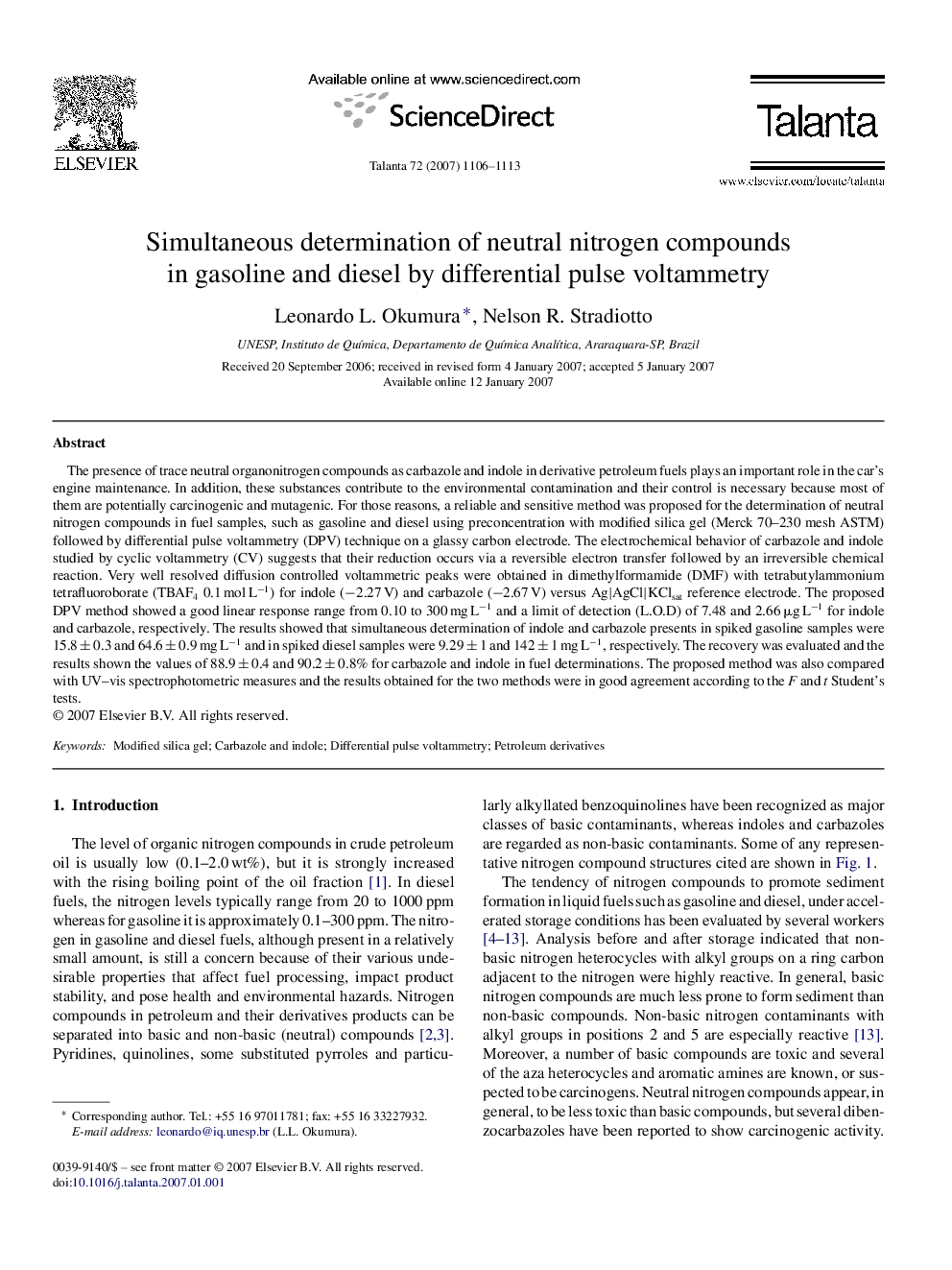| Article ID | Journal | Published Year | Pages | File Type |
|---|---|---|---|---|
| 1245007 | Talanta | 2007 | 8 Pages |
The presence of trace neutral organonitrogen compounds as carbazole and indole in derivative petroleum fuels plays an important role in the car's engine maintenance. In addition, these substances contribute to the environmental contamination and their control is necessary because most of them are potentially carcinogenic and mutagenic. For those reasons, a reliable and sensitive method was proposed for the determination of neutral nitrogen compounds in fuel samples, such as gasoline and diesel using preconcentration with modified silica gel (Merck 70–230 mesh ASTM) followed by differential pulse voltammetry (DPV) technique on a glassy carbon electrode. The electrochemical behavior of carbazole and indole studied by cyclic voltammetry (CV) suggests that their reduction occurs via a reversible electron transfer followed by an irreversible chemical reaction. Very well resolved diffusion controlled voltammetric peaks were obtained in dimethylformamide (DMF) with tetrabutylammonium tetrafluoroborate (TBAF4 0.1 mol L−1) for indole (−2.27 V) and carbazole (−2.67 V) versus Ag|AgCl|KClsat reference electrode. The proposed DPV method showed a good linear response range from 0.10 to 300 mg L−1 and a limit of detection (L.O.D) of 7.48 and 2.66 μg L−1 for indole and carbazole, respectively. The results showed that simultaneous determination of indole and carbazole presents in spiked gasoline samples were 15.8 ± 0.3 and 64.6 ± 0.9 mg L−1 and in spiked diesel samples were 9.29 ± 1 and 142 ± 1 mg L−1, respectively. The recovery was evaluated and the results shown the values of 88.9 ± 0.4 and 90.2 ± 0.8% for carbazole and indole in fuel determinations. The proposed method was also compared with UV–vis spectrophotometric measures and the results obtained for the two methods were in good agreement according to the F and t Student's tests.
